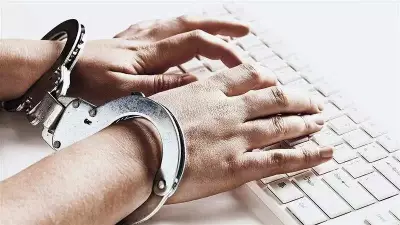
Chaos erupted across the Tricity region on Monday as thousands of protesters demonstrating against the delayed Panjab University senate elections brought traffic to a complete standstill. The massive mobilization forced police to seal key connecting roads between Chandigarh and Mohali, creating unprecedented gridlock during peak hours.
Major Roads Sealed, Traffic Diverted
Police barricades were erected at multiple critical junctions including Phase 6, Phase 7, Jail Road in Phase 9, Sector 53-Phase 3A intersection, and the crucial Airport Road stretch. The important dividing road between Mohali's Phase 2 and 3A was completely sealed, while the route from PGI Chowk to the Panjab University gate remained blocked amid heightened security arrangements.
The diversion strategies implemented by authorities pushed vehicles toward Sector 52 and inner sector roads, which quickly became overwhelmed and clogged. Traffic movement reduced to a crawl along Udyog Path and spilled into inner sectors including 23/16 and 17/22, affecting residential areas that typically experience lighter traffic flow.
Commuters Bear the Brunt
Office-goers, students, and airport-bound passengers were among the worst affected by the transportation nightmare. Vehicles coming from Zirakpur, Dera Bassi, Lalru, and Ambala were forced onto alternate routes, while those from Kurali, Kharar, and Ludhiana faced similar extensive delays.
Auto-rickshaws and cabs were seen turning back mid-route as the gridlock intensified, while school vans navigated narrow bypass lanes to reach their destinations. Many students found it extremely difficult to enter the Panjab University campus, with numerous students stranded outside sealed gates or forced to walk long distances to reach their classes.
Police Clarify Jurisdiction
Amid the transportation chaos, Ropar Range DIG Nanak Singh clarified that Chandigarh Police, not Punjab Police, implemented the barricades and road closures. "Barricades and road closures were made by Chandigarh Police, not Punjab Police," he stated clearly.
While the protest initially focused on the Senate elections delay, it saw large groups of students and farmers converging near the Punjab-Chandigarh border, prompting Chandigarh Police to enforce strict access control measures to maintain law and order.
Despite the massive traffic disruptions, PGIMER authorities confirmed that outpatient and emergency services continued normally throughout the day. Ambulance drivers used service lanes strategically to avoid traffic and ensure uninterrupted emergency medical services.
By evening, police began reopening the sealed stretches as the protest situation stabilized. However, traffic pressure remained significantly high, prompting calls for better coordination between Chandigarh and Mohali authorities during large-scale protests. Commuters expressed frustration over the lack of advance advisories and questioned the necessity of a complete border shutdown to manage the protest situation.





